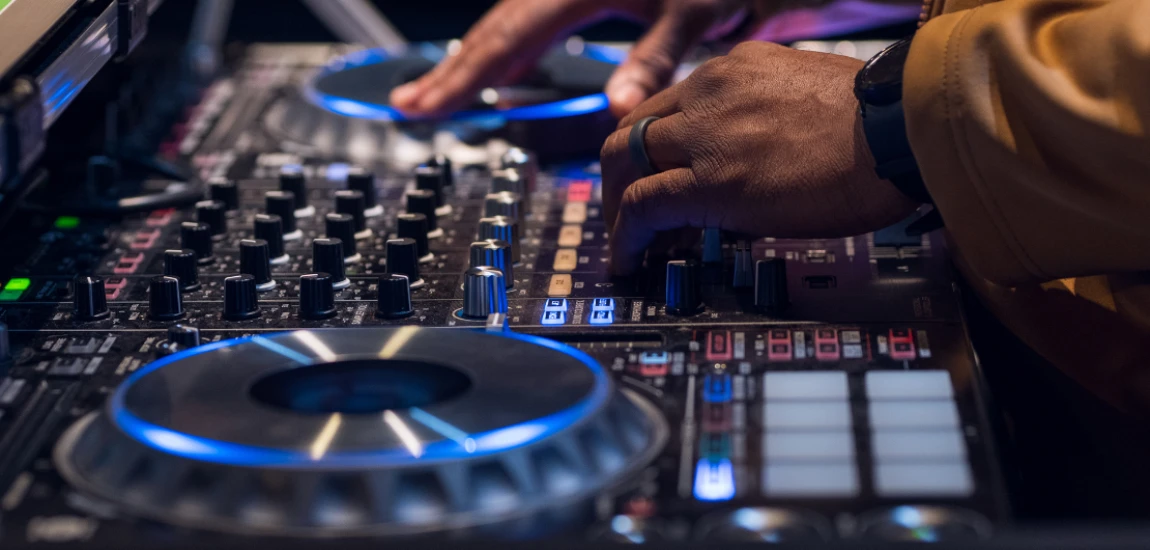The Lo-fi Boom: Why Chill Beats Became the Soundtrack of a Generation

In the past decade, lo-fi beats have quietly become one of the most recognizable sounds of modern life. Whether you’re scrolling through YouTube, working in a café, or studying late at night, chances are you’ve heard the mellow rhythms of lo-fi hip hop. What began as a niche internet subculture has exploded into a global phenomenon, redefining how we think about music, productivity, and even identity.
Known for its warm, nostalgic tones and unpolished textures, lo-fi has transcended genres to become the universal background soundtrack for a generation. But how did this understated sound rise to cultural dominance, and why does it resonate so deeply today?
Let’s break down the lo-fi boom and explore why chill beats became the soundtrack of a generation.
The Origins of Lo-fi Music

From Imperfections to Aesthetic
The term “lo-fi” (short for low fidelity) originally referred to recordings with technical flaws—tape hiss, distortion, or muffled tones. What was once considered poor quality became an aesthetic choice in the late 20th century, embraced by indie and underground artists who valued authenticity over perfection.
Hip-Hop Influence
Lo-fi hip hop owes much to 1990s boom-bap beats, sample-heavy production, and the laid-back style of underground hip-hop producers. Artists like J Dilla and Nujabes helped pioneer the mellow, soulful sound that would later shape lo-fi beats.
Internet Subculture Roots
The lo-fi boom truly began online, where small communities shared beat tapes, mixes, and nostalgic anime visuals. Platforms like SoundCloud and Bandcamp became breeding grounds for early lo-fi artists before the genre exploded on YouTube.
The YouTube Effect

The Rise of “Lo-fi Hip Hop Radio”
Perhaps nothing defines the lo-fi boom more than YouTube’s endless livestreams. The famous “lofi hip hop radio – beats to relax/study to” channel, featuring the iconic looping animation of a girl studying, became a cultural landmark and meme in itself.
A New Form of Radio
Unlike traditional playlists, YouTube streams created a sense of community. Listeners around the world tuned in simultaneously, chatting, sharing tips, and building a virtual space of relaxation and focus.
Accessibility and Reach
YouTube democratized lo-fi, making it free, global, and endlessly accessible. No ads between songs, no curated gatekeeping—just a continuous soundtrack for anyone, anywhere.
Lo-fi as the Soundtrack of Study Culture

Music for Concentration
Lo-fi beats are minimalistic, instrumental, and repetitive, making them ideal for focus. They lack the distractions of vocals and sudden tempo changes, which is why they became staples for students and professionals.
Mental Health and Relaxation
Beyond productivity, lo-fi provides a calming presence. Its warm tones and nostalgic samples help listeners combat stress, anxiety, and overstimulation, especially during late-night study sessions.
The Digital Generation’s Companion
For Gen Z and millennials, who grew up online, lo-fi became more than music—it became a lifestyle soundtrack, associated with studying, coding, journaling, or simply existing in the digital world.
Streaming Platforms and the Lo-fi Boom

Spotify Playlists
Spotify played a massive role in spreading lo-fi. Playlists like “Lo-fi Beats” and “Chillhop Essentials” introduced millions to the genre, giving lo-fi artists global exposure.
Algorithmic Recommendations
Streaming algorithms recognize patterns in listening behavior. Once someone listens to one lo-fi track, they’re often recommended dozens more, accelerating the genre’s growth.
Independent Artist Opportunities
Streaming has lowered the barriers for entry. Small, bedroom producers can upload a track and, if it resonates, see it placed on major playlists overnight.
Visual Aesthetics and Anime Influence

The Study Girl Meme
The “study girl” animation, inspired by Studio Ghibli’s Whisper of the Heart, became the unofficial mascot of lo-fi. Its looping animation perfectly matched the genre’s repetitive yet comforting vibe.
Anime and Nostalgia
Many lo-fi visuals borrow from anime, pixel art, or VHS aesthetics. This nostalgic imagery enhances the feeling of warmth and imperfection, deepening the connection between music and mood.
Visual Identity of a Genre
Lo-fi isn’t just music—it’s a brand. The visuals, color palettes, and animations are just as important as the sound, shaping its cultural identity.
The Psychology Behind Lo-fi’s Appeal

Comfort in Repetition
Human brains find safety in patterns. The steady loops of lo-fi provide predictability, which calms the mind and aids focus.
Nostalgic Warmth
Lo-fi often samples old jazz, soul, and TV clips, evoking nostalgia even for times listeners never experienced. This sense of familiarity makes it emotionally grounding.
Escapism in a Fast World
In a hyper-digital, chaotic age, lo-fi offers an escape. It slows down time, creating a gentle cocoon against the overstimulation of modern life.
Lo-fi as a Global Movement

Worldwide Producers
Lo-fi producers exist everywhere—from Tokyo to Toronto, São Paulo to Seoul. The genre transcends borders, creating a truly global sound community.
Cross-Cultural Influences
Artists blend samples from different traditions, from Japanese koto to Brazilian bossa nova, creating an international fusion that resonates universally.
Shared Online Communities
Lo-fi thrives in digital spaces—Reddit forums, Discord servers, and Twitch streams—where fans discuss music, share beats, and build friendships.
Criticism and Challenges

Oversaturation
The lo-fi boom has led to thousands of producers and tracks, making it harder for new artists to stand out. Some critics argue the genre has become formulaic and repetitive.
Commercialization
What began as an underground movement has been commercialized by big streaming platforms and labels. This shift raises questions about authenticity and exploitation.
Limited Recognition for Artists
Many lo-fi artists remain anonymous, with their tracks lost in endless playlists. The genre’s function as background music often prevents fans from learning about the musicians behind the beats.
Lo-fi’s Role in Mental Health and Wellbeing

Lo-fi as Therapy
Studies suggest that calm, repetitive music can reduce anxiety and stress. For many, lo-fi provides a therapeutic outlet during challenging times.
Pandemic Comfort
During lockdowns, lo-fi streams became sanctuaries for people seeking calm and community. They offered a sense of normalcy amid uncertainty.
Mindfulness and Focus
Lo-fi isn’t just for study—it’s also used in meditation, journaling, and self-care routines, making it a versatile tool for mental wellness.
The Future of Lo-fi Music

Expanding Beyond Study Beats
While study beats defined lo-fi’s rise, the genre is branching into other areas: lo-fi house, lo-fi jazz, and even lo-fi pop, blending elements for broader appeal.
Integration with Technology
AI-generated lo-fi is already here, with platforms producing endless chill beats on demand. This raises both opportunities and ethical debates about creativity.
Longevity of the Movement
Will lo-fi remain the soundtrack of a generation or fade as a trend? Its adaptability and integration into daily life suggest it’s here to stay, evolving with culture and technology.




